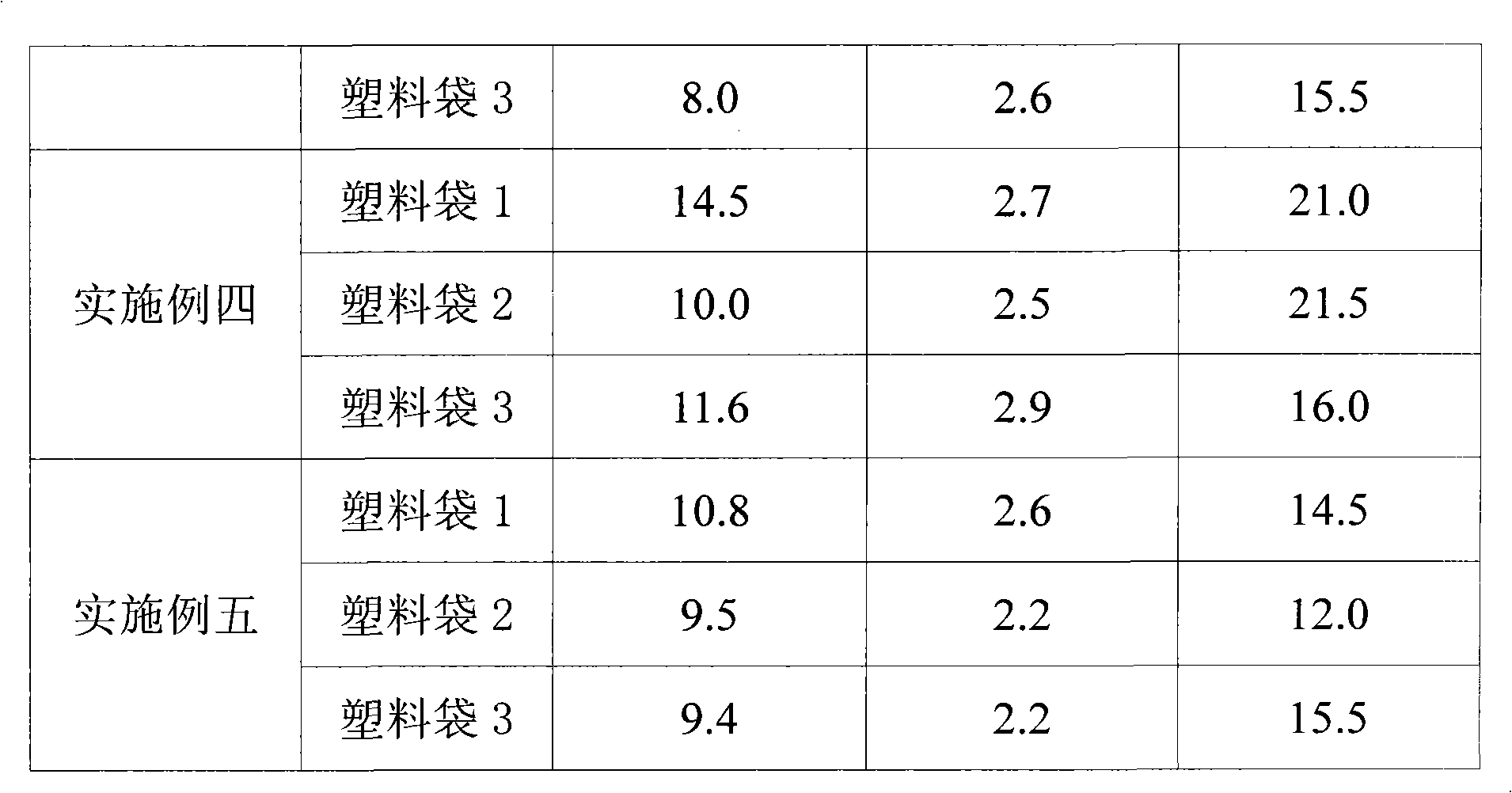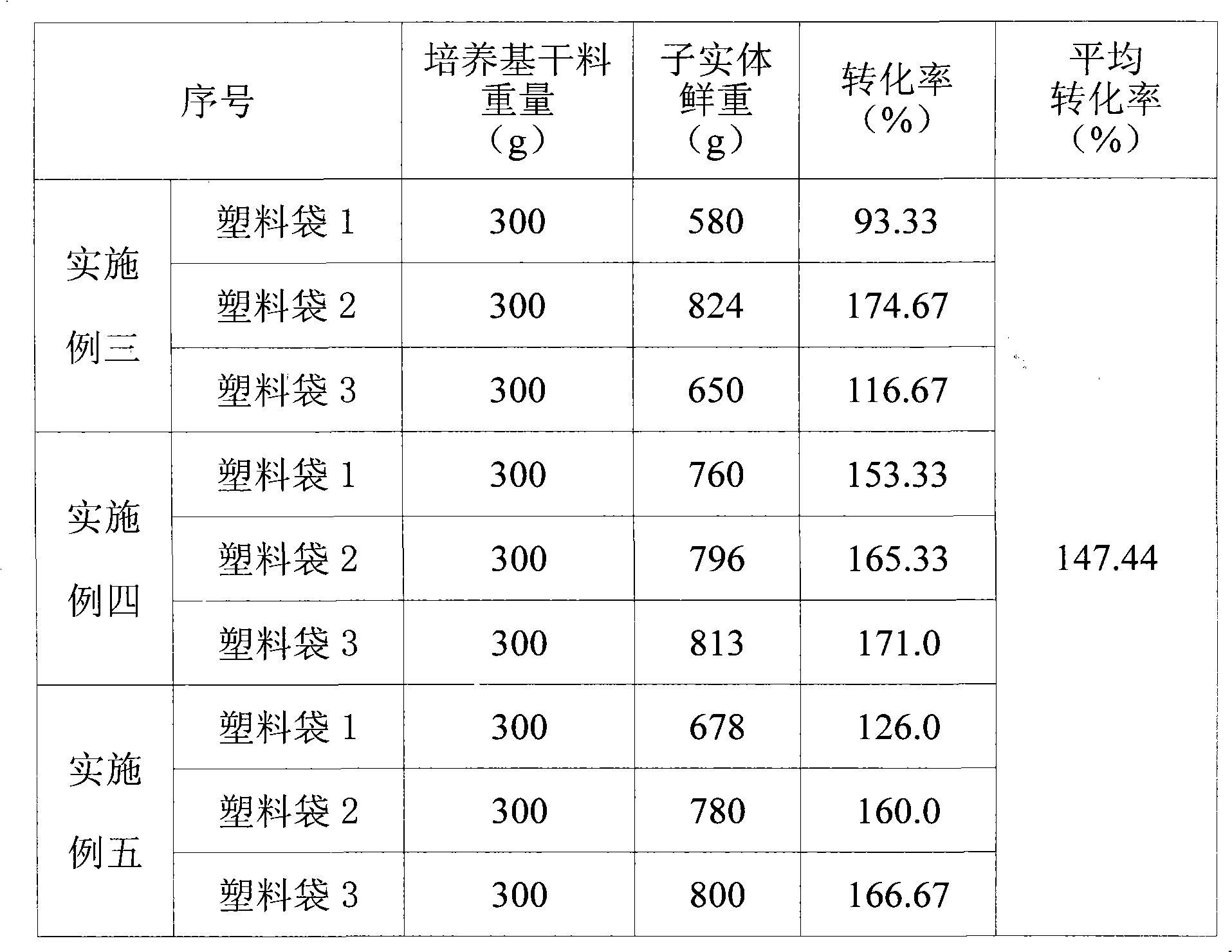Indoor soilless cultivation method for Tricholoma lobayense Heim
A technology of soilless cultivation and golden blessing mushroom, which is applied in botany equipment and methods, horticulture, application, etc., can solve problems such as easy compaction of soil, restriction of golden blessing mushroom industrial production, unsuitable handling and cleaning, etc., and achieves easy Management, easy cleaning, labor saving and effective
- Summary
- Abstract
- Description
- Claims
- Application Information
AI Technical Summary
Problems solved by technology
Method used
Image
Examples
Embodiment 1
[0014] Embodiment 1: prepare golden blessing mushroom strain
[0015] 200 grams of peeled potatoes, 20 grams of glucose, 20 grams of agar, and 1000 milliliters of water were used to make a slant. After sterilization, inoculate the strain of Chrysanthemum chrysanthemum under aseptic conditions, and cultivate for 9 days at 25°C.
[0016] Prepare 80 grams of sorghum, 16 grams of millet, and CaCO 3 2 grams, sterilized after mixing, inoculated with slant strains under sterile conditions, and cultured at 25°C for 10-15 days.
Embodiment 2
[0017] Embodiment two: the pretreatment of pottery clay
[0018] Soak the pottery clay with 3% potassium permanganate solution by mass, remove it after 12 hours, soak it in clean water and air-dry it, and finally spray water on the surface of the pottery clay for 0.5-1 hour before use.
Embodiment 3
[0019] Embodiment Three: Indoor Soilless Cultivation of Jinfu Mushroom
[0020] Prepare 288g of cottonseed hulls, 6g of gypsum, 3g of superphosphate, and 3g of lime, mix them evenly, and put them into a 13cm × 27cm polypropylene fungus bag, each bag contains 300g of dry medium, and insert it into Example 1 aseptically after sterilization The obtained jinfu mushroom strain was cultured in dark at 25° C. for 35 days to obtain jinfu mushroom bag.
[0021] Prepare the cultivation basket with perforation at the bottom, spread a layer of 1cm thick pottery soil (made by embodiment two) at the bottom of the cultivation basket, then evenly place 9 vertically peeled Jinfu mushroom bags on the potter's clay, and then place them in Jinfu Spread a layer of 3cm thick pottery clay (made in Example 2) on the mushroom bag, and finally cover with three layers of newspapers. Cultivate in dark at 26°C for 6 days, then control the culture temperature to 28°C, and control the humidity to 85% to ca...
PUM
 Login to View More
Login to View More Abstract
Description
Claims
Application Information
 Login to View More
Login to View More - R&D
- Intellectual Property
- Life Sciences
- Materials
- Tech Scout
- Unparalleled Data Quality
- Higher Quality Content
- 60% Fewer Hallucinations
Browse by: Latest US Patents, China's latest patents, Technical Efficacy Thesaurus, Application Domain, Technology Topic, Popular Technical Reports.
© 2025 PatSnap. All rights reserved.Legal|Privacy policy|Modern Slavery Act Transparency Statement|Sitemap|About US| Contact US: help@patsnap.com



